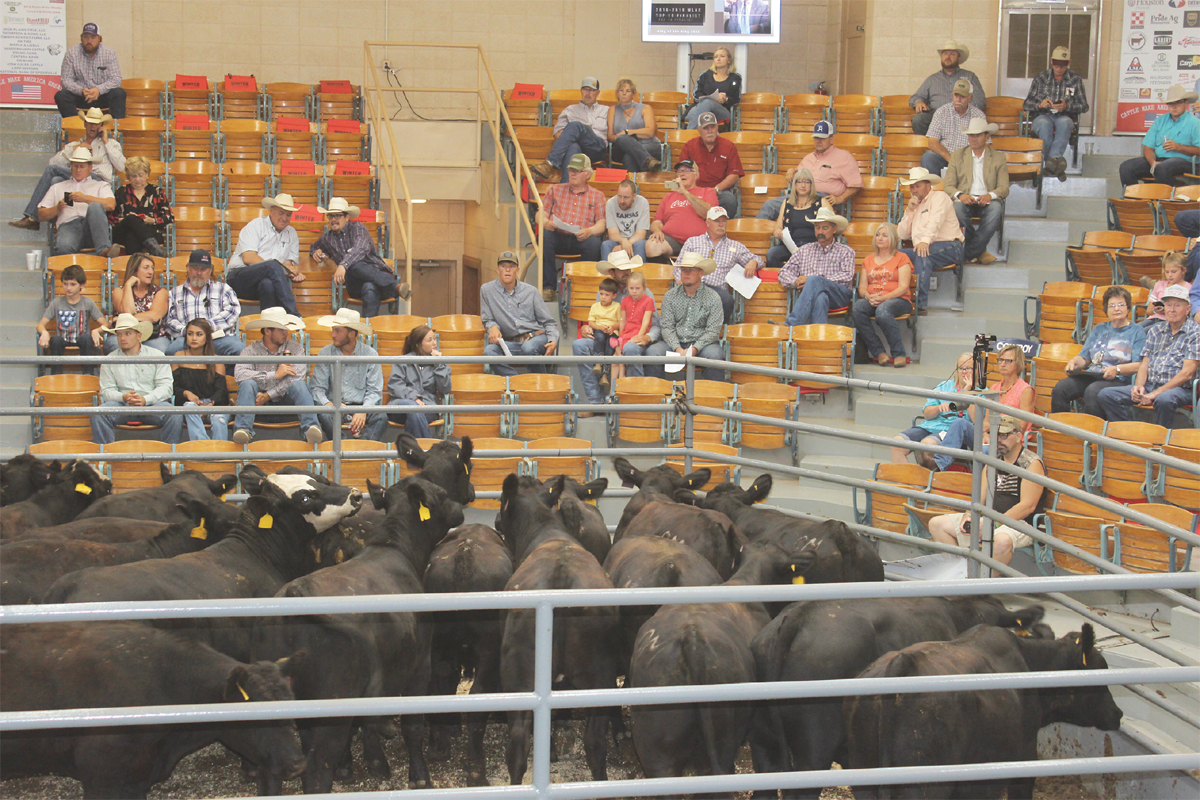The United States Cattle on Feed report indicated an increase in inventory, as reported Nov. 17 by the U.S. Department of Agriculture’s National Agricultural Statistics Service.
The report comes from feedlots with capacities of 1,000 head or more as of Nov. 1. With a total of 11.9 million head the inventory was 2% above the Nov. 1, 2022, findings.
“This report was largely in line with pre-report expectations,” said Glynn Tonsor, a professor in the department of agricultural economics at Kansas State University.
Texas, Nebraska and Kansas were the top three states in inventory with 2.9 million head, 2.54 million head and 2.52 million head, respectively. Kansas was up 8% over the same counting period in 2022 as the Sunflower State showed 2.33 million head on Nov. 1, 2022. Texas was up 4% as the Longhorn State had 2.86 million on Nov. 1, 2022. Nebraska had a 2% decline as the Cornhusker State was at 2.6 million head on Nov. 1, 2022.
In Kansas, Tonsor said drought conditions in 2022 explained lower numbers meanwhile the conditions improved and feed costs were lower in 2023.
“I also think several operations have tried to procure animals when they could have been hedged at a positive margin,” he said.
Placements in feedlots total 2.16 million head, 4% above 2022. Net placements were 2.11 million head. During October, placements of cattle and calves weighing less than 600 pounds were 55,000 head, 600 to 699 pounds were 470,000 head, 700 to 799 pounds were 465,000 head, 800 to 899 pounds were 394,000 head, 900 to 999 pounds were 205,000 head, and 1,000 pounds or more were 80,000 head.
Marketings of fed cattle during October totaled 1.76 million head, 3% below 2022. The marketings fell 3% compared to the October report.
“The marketings declined versus Nov. 1, 2022, is a near-term help, but I’d argue it is offset by Nov. 1, 2023 inventories being above both Oct. 1, 2023, and Nov. 1, 2022 inventories,” Tonsor said. “That said, this very much is a near term versus long-term timing matters issue. Over the next three- to six-months we are likely to have more domestic beef production than was expected a few months back.
“However, the longer term (the second half of 2024 and beyond) situation is still one that domestic beef production is slated for notable declines corresponding with notable lower calf crops.,” he said.
According to Tonsor although lower feed costs have helped feedlot operators, there is an expectation of lower expected fed cattle sales prices, too, and that has been a change from previous forecasts.
Over the next two to four months feeders could see more headwinds. A primary concern is likely going to be “keeping volumes up” as obtaining feeder cattle placements will increasingly be a challenge, Tonsor said.
Michael Langemeier, associate director for commercial agriculture and professor in the department of agricultural economics at Purdue University, in a web posting said that while operators were able to take advantage of lower corn prices they have faced challenges that will continue into 2024.The average fed cattle prices increased from an average price of $161 in the first quarter of 2023 to $180 in the third quarter, or 12%. Moreover, feeding cost of gain had declined from its peak earlier this year.
“These two phenomena represent the good news. Now for the not so good news,” Langemeier said. “Feeder steer prices have increased substantially from their levels earlier this year.”
Net returns to cattle finishing depend on fed cattle prices, feeder cattle prices and feeding cost of gain, he said. Fed cattle prices have strengthened the last few months. At the same time, due to lower corn prices, feeding cost of gain has also declined. Partially in response to these two phenomena, feeder prices and breakeven prices have increased substantially.
Breakeven prices for the fourth quarter of this year are expected to be $10 per hundredweight higher than those for the third quarter. Breakeven prices in early 2024 are expected to be $10 per hundredweight higher than the projected breakeven prices for the fourth quarter of this year.
“These large increases in breakeven prices increase the uncertainty related to net return prospects for the next few months,” Langemeier said.
Other disappearance totaled 55,000 head during October, 2% above 2022, the NASS report stated.
Sign up for HPJ Insights
Our weekly newsletter delivers the latest news straight to your inbox including breaking news, our exclusive columns and much more.
Definitions
Cattle on feed is defined as steers and heifers being fed a ration of grain, silage, hay or protein supplement for slaughter market that are expected to produce a carcass that will grade select or better. It excludes cattle being “backgrounded only” for later sale as feeders or later placement in another feedlot.
Cattle on feed is defined as steers and heifers being fed a ration of grain, silage, hay or protein supplement for slaughter market that are expected to produce a carcass that will grade select or better. It excludes cattle being “backgrounded only” for later sale as feeders or later placement in another feedlot.
Marketings are steers and heifers shipped out of feedlots to a slaughter market.
Other disappearance includes death loss, movement from feedlots to pasture and shipments to other feedlots for further feeding.
Dave Bergmeier can be reached at 620-227-1822 or [email protected].



